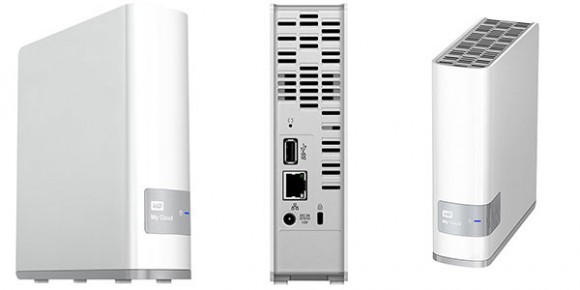 My working life depends on cloud storage. I regularly work on two desktops (Windows and an iMac), a MacBook Air, an iPad, and an iPhone, plus whatever I may be evaluating at any given time. I want my critical content–documents, spreadsheets, slide shows, sometimes audio or video files–to be available on whatever device I happen to be using at the moment. Keeping the data in the cloud makes that possible.
My working life depends on cloud storage. I regularly work on two desktops (Windows and an iMac), a MacBook Air, an iPad, and an iPhone, plus whatever I may be evaluating at any given time. I want my critical content–documents, spreadsheets, slide shows, sometimes audio or video files–to be available on whatever device I happen to be using at the moment. Keeping the data in the cloud makes that possible.
Yet the cloud has its limitations. While cloud providers, including Amazon, Dropbox, Google, and Microsoft ((I am not including Apple’s iCloud in this list because I find it too restrictive in terms of the devices and file types it supports.)) offer varying amount of free storage up to 15 GB, that can quickly be exhausted, especially if you store a lot of audio, video, or photos. If you are using the cloud to share content within your home or small business, file transfers are limited by the speed of the internet, which can become a serious issue with large files. Finally, as has become all too apparent lately, there are real privacy risks in trusting your content to third parties.
Western Digital, which has been trying hard to move beyond the business of selling commodity disk drives, has a solution that lets you create your personal storage cloud in your home or office. Starting at $150 for 2 TB of storage, the WD MyCloud is at its heart a Linux-based network attached storage server. These have been around for years, but the complexities of setting them up and using them has kept their use restricted to the technically savvy.
Hiding complexity. MyCloud comes equipped with software that hides the complexity. It’s not quite as simple to set up as a Dropbox account or other commercial cloud service, but it is well within the reach of the non-technical user. Installing it consists of plugging it into power and your network. In an initial setup, you create user accounts and optionally enable internet access to your personal cloud the WDMyCloud.com (there is some security risk any time you open up your network to remote access.)
On each computer you want to connect to your cloud, you install a small desktop app that takes care of the complexities of connecting your computer to network storage (under the hood, MyCloud uses the server message block protocol just like other NAS devices, but it is well hidden.) Once set up, the MyCloud shows up on a Mac as a shared device; it appears as a network drive in Windows 7 and as a local drive in Windows 8. Setting up a mobile device is a little different. You first download a mobile app, available for iOS, Android, and Windows Phone. When you run the app, you go through an authorization process very similar to that used by Netflix to add your account to new devices. The app asks you to generate an authorization code on a computer which you then enter on your mobile device.
Integration needed. The MyCloud personal cloud is not as convenient to use as Dropbox because it lacks app integration. The MyCloud app on your iPad (the device I mainly tested) gives you a list of available files. Click on one and it will display it (if it is a common file type such as Word or PDF) and offer you a choice of apps, such as DocsToGo, that can open it. But to open a file in the markdown editor Byword, for example, I would first have to transfer the contents to Dropbox. (This is as much a limitation of the very limited file handling capabilities in iOS as it is in MyCloud.)
But MyCloud offers significant cost advantages over commercial cloud services if you are a heavy user. Two terabytes of storage on Dropbox or Google Drive will cost you $200 a year. A 2 TB MyCloud goes for $180, 4 TB is $250, and larger, multi-drive units are planned. You can also expand storage on your own by connecting an external drive through the MyDrive’s USB 3.0 port.
